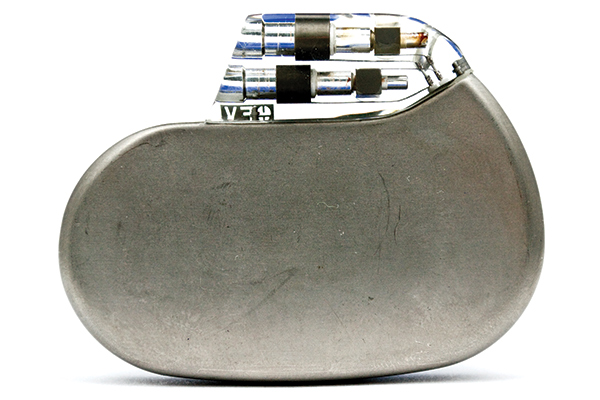ACCEL: AV Nodal Ablation and Pacemaker Therapy in the Elderly
In this ACCEL interview, E. Magnus Ohman, MD, is joined by Win-Kuang Shen, MD, FACC, professor of medicine at the Mayo Clinic in Phoenix, AZ. Here they discuss the role of atrio-ventricular (AV) nodal ablation and pacemaker therapy in the elderly.
  |
Ohman:
We have a lot of elderly patients [...] and rapid atrial fibrillation (AFib) can sometimes be a real challenge. Go through with me a little bit about the algorithm that you think about in the elderly.Shen: It’s a tremendous population impacting on the society at an increasing rate, and AFib, as we all know, is the most frequent arrhythmia abnormality in this population. We know that when it comes to the algorithm or the options we have today for AFib therapy, we talk about management of rate control.
We talk about management for rhythm control, while, of course, these are very big elements of stroke prevention. And all of us know that when it comes to the treatment for either rate or rhythm control, for the most part we don’t quite have the treatment effectiveness perfected in any way that will make us happy or satisfied by the patients or ourselves. As a result, we often struggle over how to treat this population, particularly in the elderly.
You make a very good point here in that the elderly are very, very hard to manage medically. Before we get into the medical management of AFib, let’s forget about anticoagulation for now. Let’s talk a little bit first about ablation. Is there a role for ablation of AFib in the elderly in this setting?
The answer is yes, and as a we get older, the selection of the patient is really the key. We know currently that when we ablate AFib, if we look at all the observational studies and the several small randomized studies, the average age is in the range of upper-50s to mid-60s. We really have not been primarily targeting ablation of AFib in the elderly patient population. On the other hand, as we all know, there are some very active older patients that we may not consider as elderly since they are not frail. So, for ablation, the answer is yes, but that must be very selective. For the bulk of the population, yes, what we’re talking about is the role and whether there’s increasing role for the AV node ablation and pacing.
How frequent is this condition of rapid AFib that you can’t easily manage with, say, beta-blockers or calcium-channel blockers?
 Very often. Perhaps I could invoke the AFFIRM trial. The mean age in the AFFIRM trial was about 72. That is close to the median age of the American population, which is at age 75. I think many people remember [AFFIRM] was really a landmark study of testing the hypothesis of drug therapy for rhythm control versus rate control. The bottom line is that there was no difference when it comes to mortality, and there was no difference when it comes to stroke prevention. What is really important that’s often not talked about is the crossover rates. The patients who underwent rate control with pharmacological therapy were not happy and had to go to rhythm control, and vice-versa.
Very often. Perhaps I could invoke the AFFIRM trial. The mean age in the AFFIRM trial was about 72. That is close to the median age of the American population, which is at age 75. I think many people remember [AFFIRM] was really a landmark study of testing the hypothesis of drug therapy for rhythm control versus rate control. The bottom line is that there was no difference when it comes to mortality, and there was no difference when it comes to stroke prevention. What is really important that’s often not talked about is the crossover rates. The patients who underwent rate control with pharmacological therapy were not happy and had to go to rhythm control, and vice-versa.
The crossover rate in one direction was about 35 percent in two years. In the other direction, it was about 15 or 20 percent. So, this population, all the patients with AFib, pharmacological therapy for either rate or rate control is not good enough.
When you have patients for whom you try to sustain the drugs, and you can only control their heart rate, how do you review the heart rate? Obviously, they come to clinic with AFib, and they have sort of average rates of 88 on AFib. Are you satisfied with that, or do you actually get a Holter to try to understand how well their control is?
This is really a point of discussion at many different levels. We know there’s been one randomized trial really asking the question of lenient rate control versus more strict rate control. The lenient rate control definition was those patients with the resting heart rate on a Holter or ECG was <110 beats per minute, while stricter rate control, the definition was a resting heart rate under 80 beats per minute (and with moderate exercise). Jumping to the endpoint, there was no difference when it comes to the composite endpoint of mortality and hospitalization as such, and yet hospital admissions and office visits were much more frequent among those patients randomized to strict rate control.
"What is really important that’s often not talked about is the crossover rates. The patients who underwent rate control with pharmacological therapy were not happy and had to go to rhythm control, and vice-versa."
So, you would advise in general to get some idea of the exercise level of heart rate to make sure that they stay out of the hospital, at least?
Correct, and, of course, patient symptoms. In the patients who are not very symptomatic, I tend to be more lenient. For those patients who are very symptomatic, you have to do something.
Editor’s note: This interview has been truncated and edited for readability from the full transcript.
Keywords: Cardiology Magazine, ACC Publications, Adrenergic beta-Antagonists, Aged, Algorithms, Atrial Fibrillation, Atrioventricular Node, Calcium Channel Blockers, Electrocardiography, Heart Rate, Hospitalization, Humans, Office Visits, Stroke, Treatment Outcome, United States
< Back to Listings
